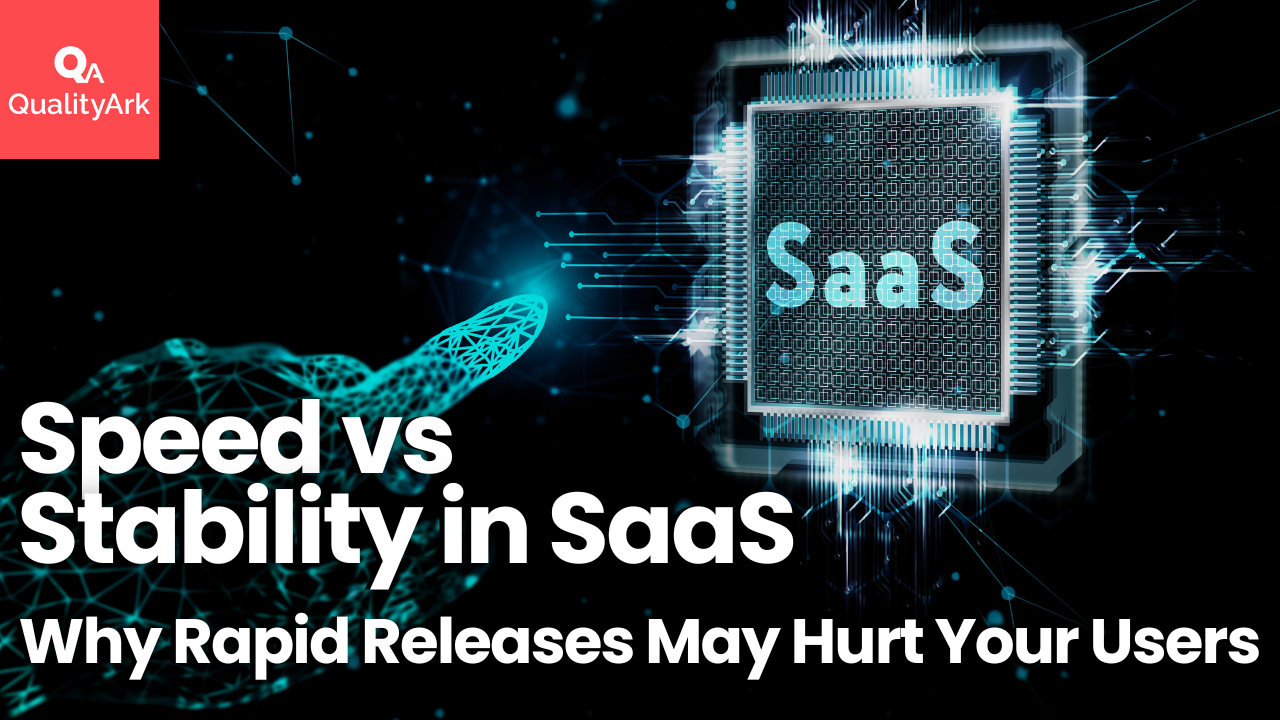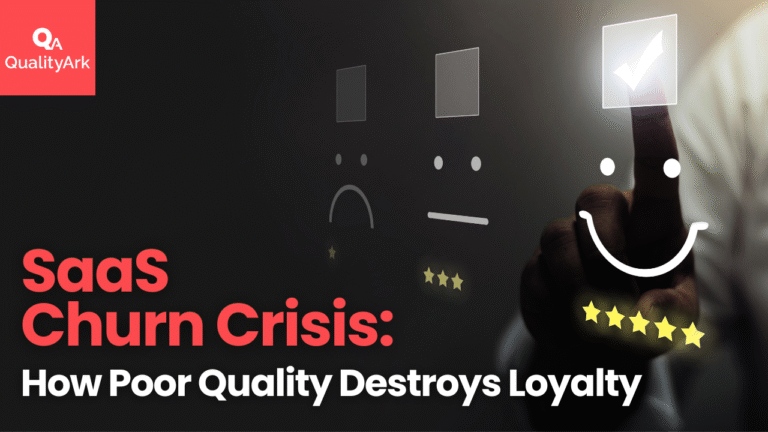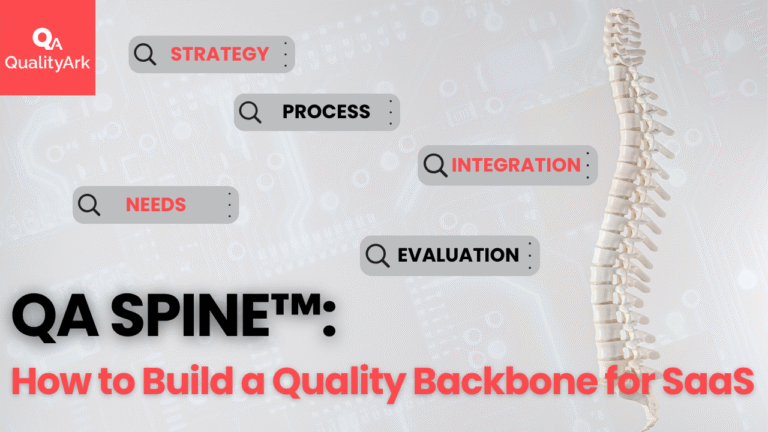Speed vs. Stability in SaaS – Why Rapid Releases Can Hurt Your Users
In SaaS, striking the right balance between speed and stability is absolutely crucial. With relentless industry pressure to release newer products and enhancements at breakneck speed, companies often run into trouble. In the race to outpace competitors and meet customers’ ever-rising expectations, many teams focus only on speed of releases, yet forget that quality must keep pace. When testing and QA get sidelined, every fresh feature or acceleration risks bugs, bad reviews, and churn.
This article outlines how hurried releases damage both you and your users in the long run – and how investing in a strategic, tailored QA approach enables high quality alongside dynamic product development.
How Does the Pressure for Speed Kill Quality?
Without a solid QA framework, no feature ever reaches its full potential. We frequently see organizations that don’t even realize their QA process is broken. In the end, the release goes live, customers get the product, and teams become so accustomed to organizational chaos and constant firefighting that they don’t know any other way.
It isn’t until a string of “red flags” – major outages or unhappy clients – appears that someone notices the chaos creeping in, and that the original ambition has been lost in the sprint to the next release.
We often see these Key Warning Signs:
- Insufficient Regression Testing – Under time pressure, testers skip or skimp on regression tests. The result? Bugs return like boomerangs, and teams spend their days chasing the same issues.
- Chaos in QA Processes – Without clear workflows, rapid releases breed disorganization, missed release paths, overlooked errors, and wasted time and money.
- Symptoms of Technical Debt – Every “quick fix” without refactoring or updating tests adds to technical debt, which accumulates like interest, until it can no longer be repaid.
- Reputational Risk – In today’s social-media world, even one serious bug can spread like wildfire, deterring thousands of current and potential users. If your helpdesk is flooded with error reports, don’t wait – act before it’s too late.

Lack of QA Strategy: Why Structure Matters
In a recent engagement with a confidential company, we saw firsthand how critical a tailored QA strategy is for the entire engineering team. On paper, they had all the right tools and processes, but they were using them poorly.
Simply listing out QA steps isn’t enough – they must align with your team’s realities and your product’s needs. When people see real benefits from organized workflows (like faster bug resolution) they embrace the process and work more effectively.
Often, what initially feels like “extra overhead” turns into a performance booster. For example, skipping documentation might save time in the moment, but it drags you down day-to-day when you can’t quickly reference test cases or incident summaries. Having those artifacts speeds up incident response and elevates the quality of conversations about improvements. And this is one of the changes we helped implement at that company, which directly translated into improved speed and productivity for the client’s team.
Test Automation: A Cure-All?
Automation can be both eagerly anticipated and slightly daunting, but its value is proven over time. Done right, it frees your team, boosts efficiency, and elevates your quality efforts. We often encounter resistance when suggesting automation, but it’s worth embracing once your core processes are stable. It’s not automation for its own sake – it’s about real impact on your daily work.
For one client, we rolled out a handful of regression-test automation tools at the outset. The payoff was immediate: smoke tests went from 1-1.5 hours down to under 7 minutes. That kind of improvement lets testers focus on the areas that truly need human insight, raising both quality and speed of releases.

User Experience, Churn, and Outages: Losing a User in 30 Days
According to Recurly’s report, average churn in SaaS sits around 3.5%, though every company’s number will differ. Still, many users abandon a product after just one major glitch, especially when so many alternatives exist.
Onboarding also plays a huge role: a smooth, thoughtful introduction to your software can cement a customer’s loyalty from day one. Software built atop a robust QA strategy isn’t just stable, it’s intuitive and reliable. Finding that sweet spot between stability and speed is essential, because frustrated users won’t stick around.
Conclusion
The SaaS market is a marathon, and victory goes not to the fastest sprinter, but to the best-prepared runner. Rapid releases without appropriate quality strategy might give you a quick thrill, but more often they lead to eroding user trust and ballooning fix-it costs. By investing in a tailored QA process and smart automation, you’ll secure not only the pace you need, but most importantly your customers’ trust. And in SaaS, that trust is your most valuable asset.
Ready to regain control over quality and accelerate your SaaS growth?
Book your free QA consultation!







